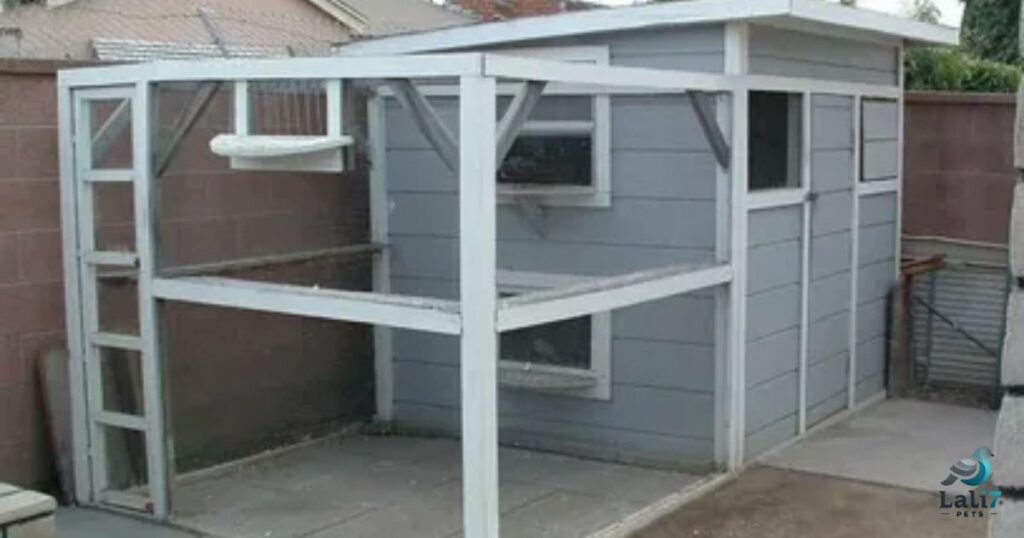If you’re thinking of raising pigeons, whether for racing, as pets, or just for the joy of the hobby, one of the first things you’ll need is a well-designed pigeon loft. The heart of successful pigeon keeping lies in creating a safe, healthy, and spacious environment. That’s where pigeon loft blueprints come in.
In this detailed guide, you’ll not only learn what makes a great loft, but you’ll also gain access to tips, step-by-step instructions, and expert insights into building your pigeon coop. So, whether you’re a first-timer or looking to upgrade your current setup, this article will walk you through the entire process.
Why Pigeon Loft Blueprints Are Essential

A well-drawn pigeon loft blueprint does more than guide construction, it ensures your pigeons thrive. Blueprints help prevent overcrowding, improve ventilation, and enhance daily maintenance. Moreover, when your pigeons are housed well, they fly better, stay healthier, and are easier to train.
I remember when I built my first loft. I used a rough sketch and ended up with poor drainage and terrible airflow. My birds constantly got sick. Once I used proper pigeon loft blueprints, the difference was night and day, clean, dry, and my birds loved it.
Pigeon Loft Design Small: Ideal for Urban Keepers
Living in the city doesn’t mean you can’t enjoy pigeon keeping. A small pigeon loft design is perfect for tight spaces like rooftops or backyards.
Key Features of a Small Pigeon Loft
- Compact size (4×4 to 6×6 feet) that accommodates up to 6–10 birds
- Elevated base for predator protection
- Lightweight materials for rooftop use
- Modular layout for easy cleaning
Pigeon Loft Designs Free: Start Without Breaking the Bank

Many aspiring pigeon fanciers think lofts are expensive to build, but that’s not always true. There are plenty of pigeon loft designs free online that can be downloaded and adapted.
Where to Find Free Blueprints
- Pigeon.org offers time-tested layouts
- ThePigeonInsider.com has community-contributed designs
- Instructables shares DIY guides with photos
These free plans include materials lists, cutting guides, and construction steps so even a novice can get started.
Simple Pigeon Loft Design: Easy Builds for Newbies
If you’re looking for an easy-to-follow guide, then a simple pigeon loft design is the way to go.
Materials You’ll Need
- Plywood or OSB for walls and roof
- Chicken wire or hardware cloth for ventilation
- Screws, hinges, and nails
- Concrete blocks or pallets for elevation
Step-by-Step Guide
- Pick a location
Choose a spot with sun exposure and protection from the wind. Avoid overhanging trees or power lines. - Measure and cut
Use your blueprint to cut all wood panels precisely. Mark and label each piece. - Build the frame
Create a rectangular base using 2x4s, then assemble the walls. - Add ventilation
Install wire mesh windows for airflow. Ventilation prevents illness. - Install the landing board and trap door
This is where your pigeons will enter. A bob trap is a great option. - Paint and weatherproof
Use outdoor-grade paint to protect the wood from rain and moisture.
Choosing the Right Location for Your Loft

Placement matters. Ideally, your loft should:
- Face east or southeast for morning sunlight
- Be elevated on concrete blocks to avoid rodent infestations
- Be positioned away from power lines or other distractions
Pigeon Loft Interiors: Make It Comfortable for Your Flock
A good pigeon loft blueprint includes an interior layout. Here’s what to plan for:
- Nest boxes: One per pair, usually 12″x12″
- Perches: Wall-mounted, staggered to avoid droppings
- Feeders and waterers: Keep them off the floor
- Screened aviary: Allows sunbathing and bathing outside
Maintaining Your Pigeon Loft
Cleanliness is crucial. A poorly maintained loft leads to illness and low motivation for flying. Here’s what you should do:
- Daily: Replace food and water. Spot-clean droppings.
- Weekly: Remove soiled bedding. Disinfect nest boxes.
- Monthly: Inspect for leaks or predator entry points.
Where to Buy Pigeon Loft Kits or Blueprints
Not everyone has time to build from scratch. If you’d rather buy a kit or get pro-level blueprints, consider:
- My Pet Chicken – Great for small lofts
- Etsy – Find handmade loft blueprints and full kits
- Backyard Chickens Forum – Community feedback on vendors
How Much Does It Cost to Build a Pigeon Loft?
Costs vary based on size and material:
- Basic DIY loft: $100–$300
- Mid-sized loft with aviary: $500–$1,000
- Custom-built or prefab lofts: $1,500 and up
You can save by sourcing materials locally or using reclaimed wood. Always factor in tools and hardware when creating your budget.
Frequently Asked Questions (FAQ)
What size should a pigeon loft be?
Aim for at least 3 cubic feet per bird. For 10 pigeons, a 6×6 loft with a 6-foot height is ideal.
Can I use chicken coops as pigeon lofts?
You can, but you’ll need to modify for ventilation and include a landing trap.
How do I protect my loft from predators?
Use raised platforms made of solid wood and secure wire mesh. Always inspect the base regularly.
Conclusion: Build with Confidence Using Pigeon Loft Blueprints
With the right plan in hand, building your pigeon loft doesn’t have to be stressful or expensive. By using quality pigeon loft blueprints, selecting the right location, and maintaining a clean, well-ventilated space, you’ll provide your birds with a home they love—and one you can be proud of.
So, whether you’re crafting a simple pigeon loft design, working on a pigeon loft design, or looking for pigeon loft designs free, remember: your success starts with a blueprint.

